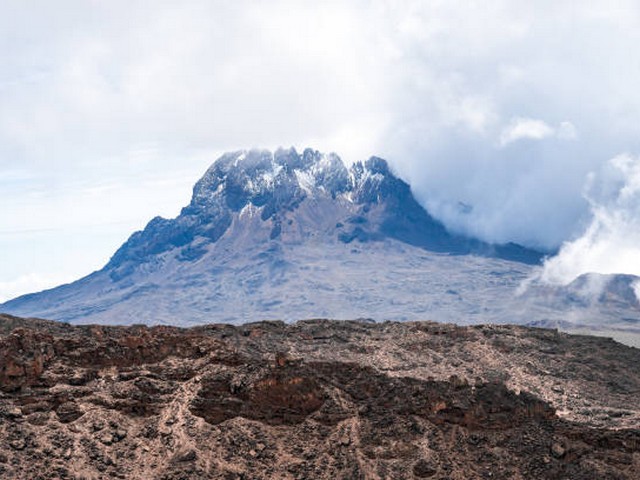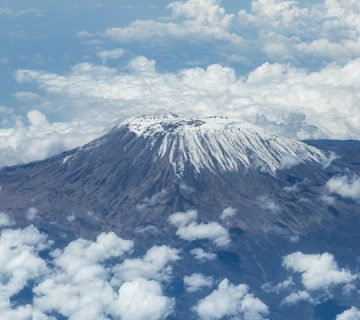Protecting Kilimanjaro’s Natural Environment During Treks
Kilimanjaro, the emblematic peak soaring above the clouds in Tanzania, is not just a mountain; it’s an ecological masterpiece. Each year, adventurers and nature lovers from around the globe set their sights on its majestic summit. However, with the privilege of experiencing its beauty comes the profound responsibility of preserving it. At the Kilimanjaro Centre for Trekking and Ecotourism (KCTE), we believe that the sustainable exploration of this natural wonder is paramount. In this blog post, we will guide you through the essential practices and innovative strategies that every trekker should adopt to protect Kilimanjaro’s delicate ecosystem.
Why is Environmental Protection Crucial on Kilimanjaro?
The Fragility of High Altitude Ecosystems
Mount Kilimanjaro is more than just a towering giant; it’s a mosaic of delicate ecosystems. From alpine deserts to lush rainforests, each zone plays a critical role in maintaining the ecological balance. These environments are incredibly vulnerable to disturbances and can take centuries to recover from damage.
Biodiversity at the Roof of Africa
Home to unique flora and fauna, some of which are found nowhere else on earth, Kilimanjaro is a biodiversity hotspot. Protecting these species is not only vital for ecological health but also for scientific research and educational value.
The Impact of Human Footprint
With thousands of trekkers ascending Kilimanjaro annually, the mountain faces significant ecological pressure. Trails become eroded, habitats are disturbed, and the risk of pollution increases. Minimizing our footprint is crucial to ensure that future generations can also enjoy and learn from this magnificent mountain.
Sustainable Trekking Practices
Leave No Trace
The ‘Leave No Trace’ principle is at the heart of sustainable trekking. This means packing out all waste, staying on marked trails to avoid disturbing untouched soil and vegetation, and being cautious about where and how you set up camp.
Water Conservation
Water resources on Kilimanjaro are limited. Efficient use of water, avoiding the use of soaps and detergents in streams, and ensuring that all waste water is filtered and treated before disposal can drastically reduce the impact on the mountain’s water systems.
Energy Use and Solar Power
Using renewable energy sources, like solar chargers for electronic devices and solar-heated water for showers, can significantly reduce reliance on fossil fuels and minimize your carbon footprint.
The Role of Eco-Friendly Gear
Choose gear that has minimal environmental impact — biodegradable products, reusable utensils, and equipment made from recycled materials. These choices can make a big difference in reducing the overall waste generated during treks.
Community Involvement and Ecotourism
Supporting Local Economies
Hiring local guides and porters, staying in locally-owned lodges, and purchasing local products not only enhances the cultural experience but also supports the economic stability of surrounding communities. This economic empowerment is crucial for fostering conservation initiatives.
Education and Awareness
Knowledge is a powerful tool in conservation. KCTE ensures that all trekkers understand the ecological value of the environments they pass through and the specific actions they can take to minimize their impact.
Innovative Conservation Initiatives
KCTE is proud to lead several initiatives aimed at preserving Kilimanjaro’s environment:
- Reforestation Projects: Planting trees to combat deforestation and promote habitat restoration.
- Water Conservation Programs: Installing water conservation systems and promoting water purification techniques.
- Wildlife Monitoring: Partnering with conservationists to monitor and protect endangered species residing on the mountain.
Engage with Kilimanjaro Responsibly
Join us at Kilimanjaro Centre for Trekking and Ecotourism (KCTE) to embark on a journey that respects and preserves the beauty of Kilimanjaro. We are committed to providing treks that are safe, enjoyable, and environmentally responsible.
Frequently Asked Questions (FAQ)
How can I ensure I’m trekking responsibly?
Choose a certified eco-friendly tour operator like KCTE, follow the Leave No Trace principles, and engage with local guides who are knowledgeable about sustainable practices.
What should I do with my waste on the mountain?
Carry all your waste down the mountain. Use biodegradable bags and participate in cleanup camps if possible.
How does hiring local guides help in protecting Kilimanjaro?
Local guides are invested in preserving their environment. They lead by example, adhering to conservation practices and spreading awareness among trekkers.
Can I participate in conservation activities during my trek?
Yes, many organizations including KCTE offer opportunities to engage in conservation activities such as tree planting and wildlife monitoring during your trek.
Conclusion
Mount Kilimanjaro is a symbol of natural beauty and resilience. By adopting sustainable trekking practices, supporting local communities, and involving ourselves in conservation efforts, we ensure that the Roof of Africa remains vibrant and intact for generations to come. Embark on your Kilimanjaro adventure with Kilimanjaro Centre for Trekking and Ecotourism (KCTE) and be a part of a community committed to making a difference.
Book your Kilimanjaro climbing with KCTE today and take the first step towards a trek that’s as responsible as it is exhilarating!
Protecting the natural environment of Kilimanjaro during treks isn’t just about preserving a mountain; it’s about safeguarding a global heritage. Join us in this noble cause, and together, let’s keep Kilimanjaro majestic, lush, and welcoming for all who dream to tread its paths.




